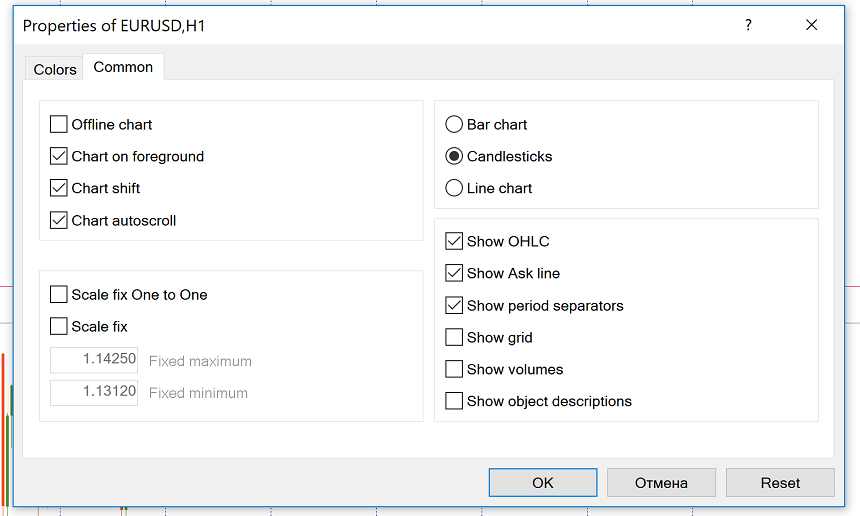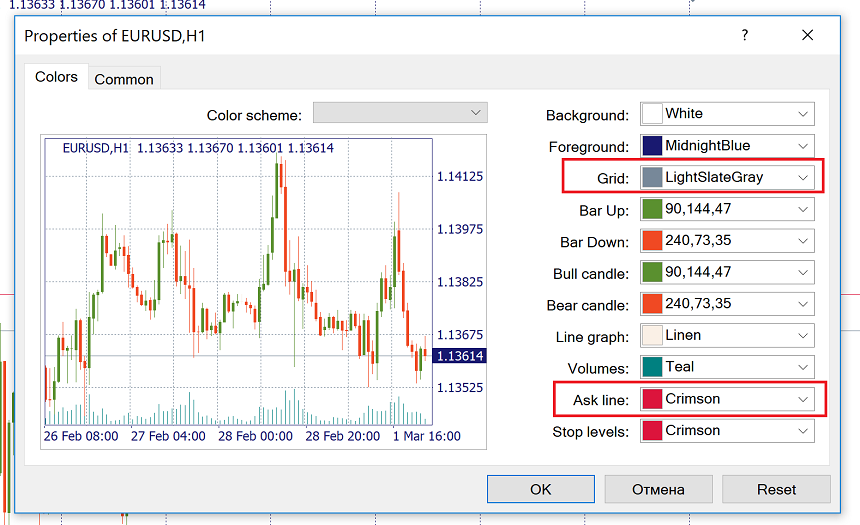Bid und Ask. Spread
Informationen sind keine Investitionsberatung
Wie viel wird es Sie kosten, auf Forex zu handeln? Der gebräuchlichste Weg für einen Broker, einen Händler zu bitten, eine Gebühr für die Möglichkeit, auf dem Devisenmarkt zu handeln, zu zahlen, ist der Spread. Hier erklären wir, wie Spreads funktionieren.
Ein Spread ist ein herkömmliches Konzept für die Finanzmärkte. Er stellt einfach die Preisdifferenz zwischen dem Preis dar, zu dem ein Händler einen Basiswert kaufen oder verkaufen kann.
Sie kennen den Spread bereits, wenn Sie bei einer Bank oder einer Wechselstube Devisen besorgen wollen. Die Bank zeigt immer zwei Devisenkurse an - denjenigen, zu dem sie eine Währung von Ihnen kauft, und denjenigen, zu dem sie sie verkauft. Der Spread zwischen diesen beiden Preisen bildet den Ertrag der Bank aus den von ihr für Sie durchgeführten Devisengeschäften.
Bid-Ask-Spread
Es gibt 2 Arten von Währungspreisen am Forex, Bid und Ask. Der Preis, den wir zahlen, um das Paar zu kaufen, heißt Ask. Er liegt immer leicht über dem Marktpreis. Der Preis, zu dem wir das Paar auf dem Devisenmarkt verkaufen, wird als Bid bezeichnet. Er liegt immer etwas unter dem Marktpreis.
Der Preis, den wir auf dem Chart sehen, ist immer ein Bid-Kurs. Der Ask-Kurs ist immer um ein paar Pips höher als der Bid-Kurs. Der Spread ist die Differenz zwischen diesen beiden Preisen.
SPREAD = ASK - BID
Zum Beispiel betragen die Währungskurse EUR/USD Bid/Ask 1,1250/1,1251. Sie kaufen das Paar zum höheren Ask-Kurs von 1,1251 und verkaufen es zum niedrigeren Bid-Kurs von 1,1250. Dies entspricht einem Spread von 1 Pip.
Wenn Sie auf die Schaltfläche "Neuer Auftrag" klicken, erscheint ein Fenster, in dem Sie die Details Ihres Geschäfts festlegen können. Das Fenster zeigt auch die aktuellen Bid- und Askpreise an.
Spread-Typen
Die Arten der Spreads hängen von der Richtlinie des Brokers ab. Ein Spread kann fest oder schwebend sein.
Die festen Spreads bleiben unabhängig von den jeweiligen Marktbedingungen gleich. Auf diese Weise wissen Sie im Voraus genau, wie viel Sie für ein Geschäft bezahlen werden. Eine weitere gute Sache ist, dass der Broker nicht in der Lage sein wird, den Spread zu erweitern, selbst wenn sich die Marktbedingungen ändern.
Bei FBS sind die Spreads nicht fest, sondern variabel.
Schwebende oder variable Spreads hingegen verändern sich ständig. Sie werden sich je nach Angebot und Nachfrage der Währungen und der allgemeinen Marktvolatilität ausweiten oder verschärfen. Schwebende Spreads nehmen in der Regel in den Zeiten wichtiger Konjunkturentwicklungen und während der Feiertage zu, wenn die Liquidität am Markt sinkt. Variable Spreads eliminieren das Erleben von Requotes und wenn der Markt ruhig ist, können sie niedriger sein als die festen.
Die optimale Art des Spreads hängt von Ihren Präferenzen als Händler ab. Im Allgemeinen können feste Spreads die Handelsergebnisse besser vorhersehbar machen.
Beachten Sie, dass FBS den Handel von Konten mit festem und variablem Spread anbietet, so dass Sie die Option wählen können, die Ihnen am besten gefällt oder mehrere verschiedene Konten haben.
Kostenberechnung
Beachten Sie, dass die Spreadkosten auf dem Devisenmarkt im Allgemeinen im Vergleich zu den Ausgaben an den Aktien- oder Optionsmärkten vernachlässigbar sind. Da der Spread in Pips angegeben ist, kann ein Händler die Kosten für jedes Geschäft leicht berechnen, indem er den Spread in Pips mit dem Wert von 1 Pip multipliziert.
Spread ist ein wichtiger Parameter, den Sie bei der Auswahl eines Brokers berücksichtigen sollten. Stellen Sie sicher, dass Sie mit den angebotenen Spreads zufrieden sind. Wir empfehlen Ihnen, die Handelsbedingungen der Gesellschaft immer zu testen, ohne Ihr Geld zu investieren, indem Sie ein Demo-Konto eröffnen.
Je kürzer die Laufzeiten Ihres Geschäfts, desto wichtiger ist die Größe eines Spreads. Zum Beispiel, wenn Sie eine Position für mehrere Minuten offen halten und Ihr Gewinn 10 Pips beträgt, würde ein 3-Pip-Spread bedeuten, dass Sie 30% Ihres Gewinns für die Ausführung dieses Geschäfts zahlen. Wenn Sie Ihr Geschäft für einen Tag offen halten, wird es wahrscheinlich eine größere Änderung des Preises geben - sagen wir, Sie würden 100 Pips verdienen. In diesem Fall zahlen Sie nur 3% Ihres Gewinns als Spread.
Je populärer das Währungspaar ist, desto kleiner ist der Spread. So ist beispielsweise der Spread für EUR/USD-Transaktionen in der Regel sehr gering oder, wie Händler sagen, eng.
Wie man den Spread im MetaTrader überprüft
Wie bereits erwähnt, zeigt MT standardmäßig nur den Bid-Preis an. Um die Ask-Linie zu Ihrem Diagramm hinzuzufügen, klicken Sie mit der rechten Maustaste in Ihrem Diagramm und wählen Sie "Eigenschaften". Klicken Sie dann auf "Allgemein" und aktivieren Sie "Ask-Linie anzeigen". Klicken Sie auf die Schaltfläche "OK" und die Ask-Linie erscheint in kleineren Zeitfenstern (in höheren Zeitfenstern deckt die Bid-Linie die Ask-Linie ab).

Wenn Sie die Ask-Linie immer noch nicht sehen können, überprüfen Sie, ob sie die richtige Farbe hat. Gehen Sie zurück zu Ihren Eigenschaften und überprüfen Sie, ob das Raster (d.h. die Bid-Linie) und die Ask-Linien die richtige Farbe haben.

Sie können auch die Bid/Ask-Preise für alle verfügbaren Handelsinstrumente sehen, wenn Sie auf "Ansicht" klicken und dann "Marktübersicht" wählen. Wenn Sie den Spread für ein bestimmtes Symbol sehen möchten, klicken Sie mit der rechten Maustaste im Fenster Marktübersicht und wählen Sie "Spread". Beachten Sie, dass MT4 den Spread in MetaTrader4 Punkten berechnet. Um die Größe des Spreads in Pips zu ermitteln, müssen Sie die angezeigten Zahlen durch 10 teilen.
Andere Artikel in dieser Sektion
- Wie beginnt man den Devisenhandel?
- Wie eröffnet man ein Geschäft in MetaTrader?
- Wie viel Geld brauche ich für den Forex-Handel?
- Demo-Konten
- Die Forex Broker
- MACD (Indikator für das Zusammen-/Auseinanderlaufen des gleitenden Mittelwerts)
- Wie bestimmt man die Positionsgröße?
- Hebelwirkung und Marge
- Swap und Rollover
- Transaktion, Gewinn, Verlust. Arten von Aufträgen
- Wirtschaftskalender
- Wie kann ich vorhersagen, wie verändern sich die Wechselkurse?
- Wann wird der Forex Markt geöffnet?
- Berechnung des Werts für 1 Pip in verschiedenen Währungspaaren
- Was ist ein Lot?
- Gewinnermittlung
- Was ist Pips und Lots?
- Wie handelt man?
- Die Währungspaare. Basiswährung und quotierte Währung. Majors und Crosses
- Welche technische Instrumente brauche ich für den Handel?
- Welche Risiken gibt es?
- Wie viele Gelder kann man mit Forex verdienen?
- Warum Handel mit Forex?
- Was ist Forex?















